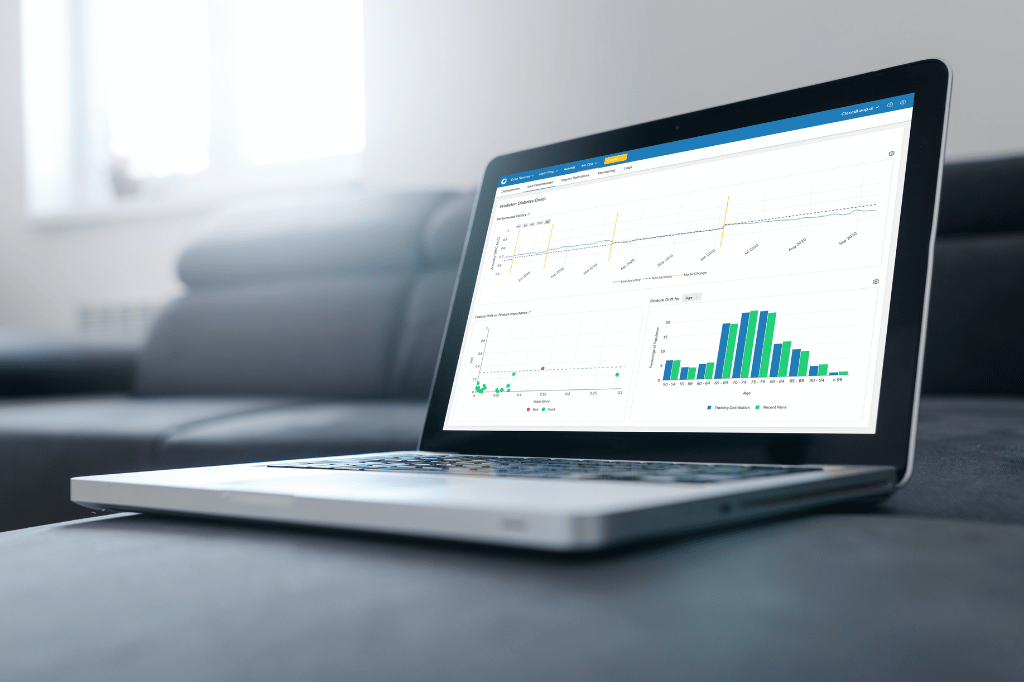The Era of Digital Health
The era of digital health has arrived and it’s here to stay. Digital health was already reshaping traditional care, but the sudden and extreme constraints imposed by the pandemic catalyzed explosive adoption and investments. 2020 shattered previous consumer adoption rates and set a record-breaking 103% increase in funding for digital health solutions. This incredible rate of growth has continued past the pandemic’s peak.
Digital health solutions are focused on consumers. At their core, they are technology-enabled services that deliver information designed to improve health. These solutions provide personalized support and access to new care delivery and management options and emphasize engagement and convenience. Examples include Livongo that helps consumers manage chronic conditions through smartphone apps that leverage remote monitoring data to detect early warning signs, promote healthy behaviors, and provide tailored recommendations. Similarly, solutions like Teledoc focus on providing virtual care and enabling consumers to more easily receive medical attention.
Despite the diverse range of options these digital health companies provide, they have one goal in common: maximizing the value of data. In order to effectively engage individuals with personalized insights and improve health outcomes, digital health companies must ingest, integrate, and contextualize vast amounts of data—including the unique data they generate through their own processes and interventions. Without the ability to leverage all available data, digital health companies will be unable to design a solution that resonates with consumers. At their core, successful solutions require intelligent feedback loops.
Achieving Success Through Intelligent Feedback Loops
Feedback loops are a profoundly effective tool for changing behavior and are increasingly at the heart of health-related efforts. Feedback loops are entering a kind of renaissance, particularly as emerging technologies make data more available and feedback more rapid. By creating quicker cycles of learning and improvement, they have become a powerful technique for fostering change.
The best feedback-rich designs are ones that intentionally build mastery, remove barriers in ways that foster engagement, and drive noticeable improvements in health. For example, data from a consumer’s remote monitoring device may be analyzed in tandem with machine learning and stores of existing data to provide actionable advice in response to a spike in blood pressure. In such an instance, a digital health app may advise the consumer to drink two glasses of water, take a short walk, and test their blood pressure again in 30 minutes. Alternatively, it might encourage them to phone their physician.
Precise recommendations require recurring cycles of observation, orientation, decision, and action. Through this process, the management of data analytics, interventions, and business practices are constantly evaluated and bolstered with new learnings. As a result, forward-thinking digital health companies capable of leveraging these feedback loops are constantly leapfrogging the competition and improving the precision and effectiveness of care.
For a comprehensive discussion of intelligent feedback loops, please download our ebook: Precision Health Intelligence — The Key to Population Health Success.
While the power of intelligent feedback loops may be obvious, how digital health companies effectively exploit their data to establish and maintain them is not.
Ultimately, creating intelligent feedback loops requires data science expertise and a technology platform that integrates several key capabilities, including the ability to:
- Absorb new data to improve the contextual awareness of people’s health, motivations, and behaviors, including data that characterizes treatments and health services
- Create new measures that reflect individual responses, experiences, and outcomes
- Make and surface predictions that anticipate unmet needs
- Identify and match individuals with the option that best meets their needs
- Support experimentation to test and compare results and innovations
- Continuously monitor interventions to learn which are effective and under what circumstances
Acquiring these capabilities is critical, but for many companies, it represents a pivotal decision: “How will they approach gaining such capabilities?”
Data Science Capabilities: Build Or Buy?
The decision of whether to build comprehensive data science capabilities in-house or buy from a vendor is an exercise in trade-offs. Digital health companies must identify their specific needs and consider them in tandem with the financial and time investments required. They must also evaluate how long it will take to begin building and deploying models successfully, determine how customizable the platform must be for healthcare-specific applications, and assess its long-term scalability. Speed is critical to remain competitive, but can’t come at the cost of quality and long-term success.
Building an internal data science team and advanced data science technology stack can be challenging and costly. Digital health companies are already pouring their resources into crafting the most impactful solutions they can, and developing an end-to-end platform that can go toe-to-toe with vendor offerings is a massive undertaking. However, building it could bring key advantages that are difficult to replicate through vendor offerings—such as easier customization for healthcare-specific needs and the ability to tailor data science efforts more closely to the unique focus of the business.
Buying data science capabilities, especially from an all-purpose data analytics vendor can leave companies facing serious limitations, but it can offer more immediate results than building in-house. Many general-purpose data science offerings don’t provide customizable models, and are instead limited to one-size-fits-all options. This may be enough to get in the ballpark, but tailored, healthcare-specific features and models are essential to improvement and long-term success. And yet, such offerings can accelerate go-to-market strategies for growing digital health companies without the need to invest as heavily in developing data science capabilities.
But what if digital health companies had the ability to selectively choose the benefits of both approaches that best fit their needs while anticipating and avoiding the downsides? What would a flexible, nuanced approach entail and is it possible?
The Best of Both Worlds: A Unique Approach to Healthcare Data Science
For digital health companies, the decision to either build out a data science team or pay an external vendor for their data science offering is a false choice. Much like the flexibility and personalization of care they provide for individuals, digital health companies should enhance their data science capabilities in the manner that best fits their unique needs and circumstances. Rather than strictly building or buying, digital health companies can form partnerships with healthcare-specific data science vendors to quickly attain the proficiencies they need without compromising. This hybrid approach is not only possible, it is often ideal.
Critically, partnerships can enable rapid progress and innovation at any stage of data science proficiency. Regardless of whether enhancement manifests in support for existing analytics teams or in an external “first data science hire,” adopting a flexible, hybrid approach can help to streamline the integration of ML and AI. This helps to both avoid the potential pitfalls of either approach and simultaneously reap the benefits. Even if digital health leaders have already invested in developing an end-to-end stack, integrating powerful machine learning capabilities, a breadth of customizable healthcare-specific features, and external data sources (e.g., social determinants of health data) will undoubtedly fuel improved outcomes.
Such arrangements can provide agility, require relatively minimal investment, and offer customization—effectively fostering long-term growth. This enables digital health companies to begin benefitting from intelligent feedback loops quickly and affordably. Moreover, vendor healthcare expertise and an understanding of explainability’s importance can provide foundational support for new model development or augment existing efforts.
Instead of relinquishing control or trying to go it alone, digital health companies can look past this false dichotomy. As they navigate the evolution of their data science capabilities, recognizing their ability to borrow and combine the best elements of both build and buy approaches will lead to achieving better health outcomes more quickly and efficiently.
Interested in reading more about digital health and other rapidly growing aspects of healthcare? Check out these blogs and resources:














